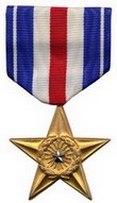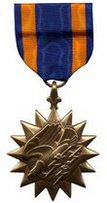Jake Jones
Ballplayers Decorated in Combat
| Date and Place of Birth: | November 23, 1920 Epps, LA |
| Date and Place of Death: | December 15, 2000 Delhi, LA |
| Baseball Experience: | Major League |
| Position: | First Base |
| Rank: | Lieutenant |
| Military Unit: | VF-3 US Navy |
| Area Served: | Pacific Theater of Operations |
James M. “Jake” Jones was born in Epps, Louisiana, on November 23, 1920.
He graduated from high school in 1938, and played semi-pro baseball in
Louisiana, with the Clarks Lumbermen. In 1939, he was signed by the
Monroe White Sox of the Class C Cotton States League, and batted .321
with 14 home runs and 103 RBIs in 138 games. Playing for the Shreveport
Sports, Jones led the Class A1 Texas League in home runs in 1940. The
following year, he was hitting .301 and leading the Texas League in home
runs again, when the Chicago White Sox called him up on September 20.
The 6-foot-3-inch first baseman played three games for the White Sox,
going hitless in 11 at-bats. In 1942, he was back with Shreveport and
enjoyed a further seven games with the White Sox, before enlisting with
the Navy during the summer.
Jones was an aviation cadet, earned his wings as a fighter pilot and
commission as an ensign on August 1, 1943, and served in the Pacific
Theater flying the Grumman F6F Hellcat as a member of VF-3, the third
air group on the carrier USS Yorktown (CV-10). Lieutenant Jones shot
down seven Japanese planes, the highest total in his group.
"A great guy and one of the best flyers I ever saw," a Navy colleague of
Jones told Grantland Rice in September 1946. "Jake was on the Fighting
Lady [USS Yorktown], one of the fightingest carriers in the war. And
Jake was one of the fightingest pilots in that outfit. His record was
seven Jap planes shot down in combat and, in addition to this, he was
responsible for the sinking of at least four Jap ships.
"His war campaign included the Philippines, Formosa, China, Iwo Jima,
Okinawa and missions over Tokyo. It was over Tokyo that three Jap
flyers, ganged up on him but he got all three.
"Jake got to play some baseball between fights, but not too much. I
recall once when he came back from a flight and we had quite a party
that night. It was on the island of Maui. Next day Jake played ball and
got two home runs and a triple, to break up the game. He certainly could
put the wood against that ball."
In November 1944, Ensign Jones was awarded the Air Medal for air strikes
on targets in the Philippines in support of the invasion of Leyte. His
citation read:
“For distinguishing himself by meritorious acts while participating in
an aerial flight as pilot of a carrier based fighter airplane assigned
to strike against enemy installations and shipping in the vicinity of
the Philippine Islands on 14 November 1944. He performed his assignment
as wingman for the Air Group Commander in an outstanding manner and
destroyed an enemy fighter during our attack. His skill and courage were
at all times inspiring and in keeping with the highest traditions of the
United States Naval Service.”
Promoted to lieutenant junior grade, he was awarded a second Air Medal
for action against Japanese forces in December 1944. The citation read:
“For meritorious achievement in aerial flight as pilot of a fighter
plane in Fighting Squadron THREE, attached to the USS Yorktown, in
action against enemy Japanese forces in the vicinity of the Philippine
Islands, December 14, 1944. Participating in a strike against the enemy,
Lieutenant Junior Grade, Jones pressed home a daring attack against
three enemy fighters, destroying one, inflicting severe damage on
another and forcing the third to flee. His skill, courage and devotion
to duty were in keeping with the highest traditions of the United States
Naval Service.”
Combat missions flown by Lt(jg) Jones between January 3 and January 15,
1945, at Formosa, China, French Indo-China and Nansei Shoto, earned him
a further two Air Medals, and a week later, he was awarded the
Distinguished Flying Cross. The citation said:
“For heroism and extraordinary achievement in aerial flight as pilot of
a fighter plane in Fighting Squadron THREE, attached to the U.S.S.
Yorktown, during action against enemy Japanese forces in Formosa on
January 21, 1945. Participating in a long instrument flight, Lieutenant
Junior Grade Jones carried out a low altitude attack in the face of
intense antiaircraft fire, scoring rocket hits to set a large hostile
oiler on fire and contribute to the success of the mission.”
Jones later participated in first carrier-based raids on Tokyo, on
February 16/17, 1945, earning him the Silver Star and another
Distinguished Flying Cross. The Silver Star citation read:
“For conspicuous gallantry and intrepidity in action against the enemy
during the first carrier based strikes against the Japanese homeland on
February 16, 1945. While flying a carrier based fighter plane he
countered aggressive, determined and skillful attacks by numerically
superior enemy fighters. He succeeded in shooting down three of these
enemy fighter planes. After air opposition had been neutralized he, with
his wingman, made low-level rocket and strafing attacks against air
field installations, securing destructive hits on each of six hangers.”
The Distinguished Flying Cross citation read:
“For heroism while participating in aerial flight against the enemy
during the first carrier based strikes against the Japanese Homeland on
February 17, 1945. While flying a carrier based fighter plane as section
leader in his Air Group Commander’s division, he countered the attacks
of aggressive, determined and numerically superior enemy fighters. In
this action he shot down two of these attacking planes. His skill and
courage were at all times in keeping with the highest traditions of the
United States Naval Service.”
Lieutenant Jones returned home with two Distinguished Flying Crosses,
four Air Medals and the Silver Star. He had shot down seven Japanese
planes and sunk a number of Japanese ships, making him won of the most
highly decorated and successful ballplaying war heroes of World War II.
Jones returned to the White Sox for spring training in 1946. He injured
his leg before the regular season got under way and played just 24
games, before suffering a season-ending fracture of his left wrist and
elbow on May 26. He played every game of the 1947 season, albeit between
two different clubs, as he was traded by the White Sox to the Boston Red
Sox on June 14. Jones batted just .237, but hit 19 home runs and
contributed an excellent 96 RBIs.
An unusual incident occurred involving Jones on July 27, 1947. Playing
against the Browns, he hit a foul ball along the third base line in the
sixth inning. Pitcher Fred Sanford threw his glove at the ball to
prevent it from rolling into fair territory and umpire Cal Hubbard
awarded Jones a triple on the basis of the rule about intentionally
thrown gloves. In 1954, the rule was changed so that it only applied to
fair balls.
In December 1947, he re-enlisted in the Naval Air Reserve to participate
in the volunteer flying program at Squantum, Massachusetts. He played
his last season in the majors in 1948 with the Red Sox, as a backup
first baseman to Billy Goodman, appearing in 36 games and batting just
.200, and spent 1949 in the minors between the Louisville Colonels and
the San Antonio Missions.
Jones was recalled to active service during the Korean War and helped
train pilots.
Jake Jones passed passed away at a hospital in nearby Delhi, Louisiana,
on December 15, 2000. He was 80 years old and is buried at Epps
Cemetery, in Epps, Louisiana.
Date Added January 20, 2018
Can you add more information to this biography and help make it the best online resource for this player? Contact us by email
Read Baseball's Greatest Sacrifice Through The Years - an online year-by-year account of military related deaths of ballplayers
Baseball's Greatest Sacrifice is associated with Baseball Almanac
Baseball's Greatest Sacrifice is proud to be sponsored by



